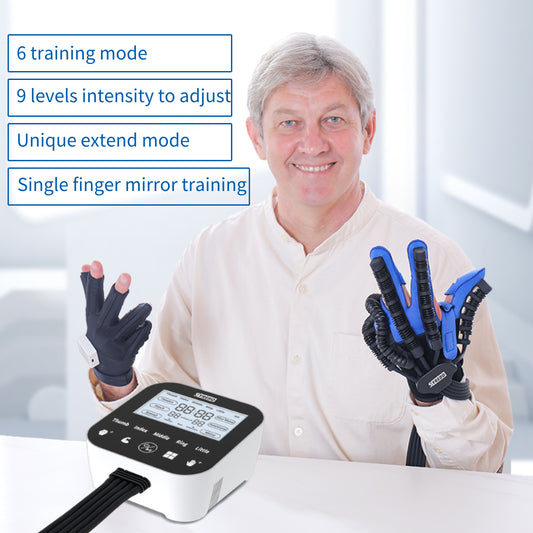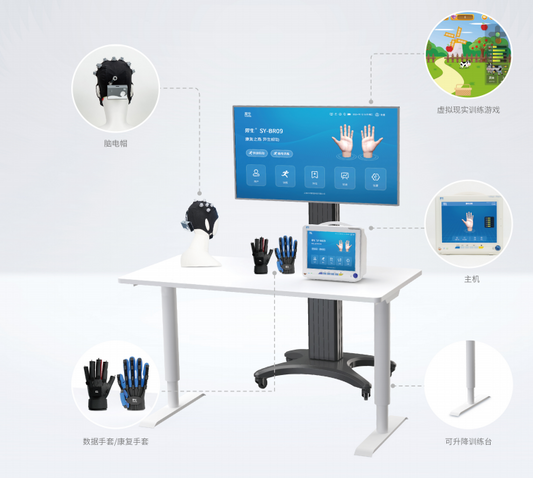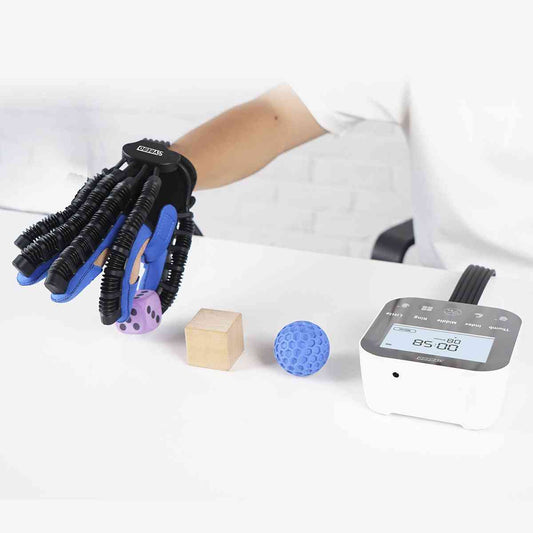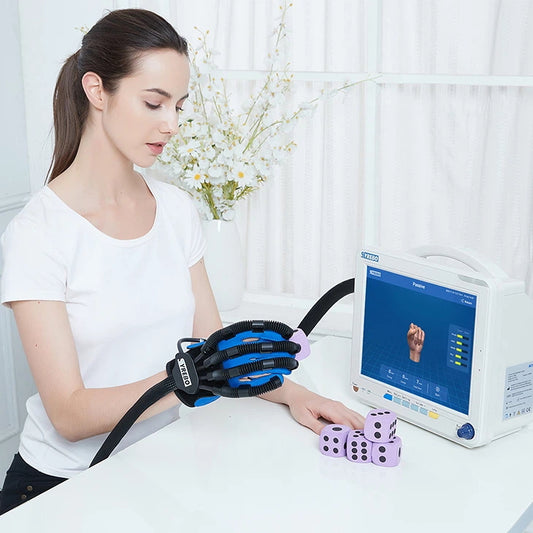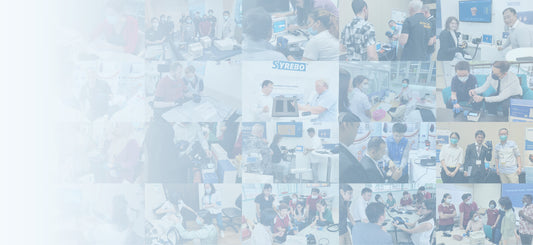How Long Does Stroke Recovery Take?
If you or a loved one has recently suffered a stroke, you may feel overwhelmed and have questions about the future. But chances are, recovery is at the center of your attention.
Strokes vary. Some people may feel more like themselves in just a few days, without any lasting physical or cognitive problems. But for others, it can take months to heal or adjust to any long-term effects.
So, how do you know what will happen next?
The type and severity of the stroke, when the symptoms of the stroke were first noticed and when treatment was initiated, pre-existing medical conditions, and general health can all have an impact on treatment and the time it takes to recover from a stroke.
Below, we'll introduce you to some of the physical and cognitive challenges that can come with a stroke, as well as a general stroke recovery timeline to help you understand what may happen in the days and months ahead.
How Is Stroke Treated?
On the way to the hospital
If someone you know shows signs of a stroke, call 9-1-1 immediately.
Do not drive to the hospital or have someone else drive you to the hospital. The key to stroke treatment and recovery is getting to the hospital quickly. However, 1 in 3 people who have a stroke never call 9-1-1.
Calling an ambulance means that medical personnel can begin life-saving treatment on the way to the emergency room.
Stroke patients who are transported to the hospital by ambulance may be diagnosed and treated more quickly than those who are not.EMTs may transport you to a specialized stroke center to make sure you get the fastest possible diagnosis and treatment.
EMTs will also gather valuable information to guide treatment and alert hospital medical staff before you arrive at the emergency room so they have time to prepare.
At the hospital
At the hospital, the healthcare provider will ask you about your medical history and when your symptoms started.
A brain scan will show the type of stroke you had. You may also work with a neurologist who treats brain disorders, a neurosurgeon who performs surgery on the brain, or specialists in other areas of medicine.
Treating an ischemic stroke
If you go to the hospital within 3 hours of the first symptoms of an ischemic stroke, a medication called a thrombolytic drug (a "clot-busting" medication) may be used to dissolve the blood clot.
This can improve the chances of recovering from a stroke. Studies have shown that ischemic stroke patients who receive this treatment are more likely to make a full recovery or become less disabled than those who do not receive this medication.
Unfortunately, many stroke patients do not make it to the hospital in time to receive tPA. 4 Unfortunately, many stroke patients do not make it to the hospital in time to receive tPA, so it is important to recognize the signs and symptoms of a stroke immediately and call 9-1-1.
Doctors can also treat ischemic strokes with other medications, such as blood thinners, or they can surgically remove blood clots.
Treating Hemorrhagic Stroke
Hemorrhagic strokes may require other medications, surgeries, or procedures to stop the bleeding and save brain tissue. Example.
Drugs, surgery, or other procedures may be needed to stop the bleeding and save brain tissue. Examples include
- Endovascular surgery. Endovascular surgery can help repair weak points or breaks in blood vessels and may be used to treat certain hemorrhagic strokes. Learn more about this procedure.
- Surgical treatment. Hemorrhagic strokes can be treated with surgery. If the bleeding is caused by a ruptured aneurysm, metal clips may be used to stop blood loss.
Recovering From Stroke: Stroke Rehabilitation
What To Expect After a Stroke: Possible Physical and Cognitive Effects
During a stroke, the blood supply to the brain is interrupted or reduced. When this happens, the brain tissue does not get all the oxygen or nutrients it needs, which causes damage.
Not everyone will experience the same effects of a stroke. But some of the most common physical and cognitive challenges that stroke victims face after a stroke include
- Decreased gait and motor function
- Impaired coordination and balance, or, in more severe cases, ataxia, a degenerative neurological condition
- Weakness or paralysis
- Difficulty speaking or understanding the language
- Difficulty swallowing (also known as dysphagia)
- Mood and behavioral changes, such as depression, anger, or frustration
- Impaired cognitive abilities
- Sensory changes, such as vision problems or reduced or absent sensation in parts of the body
Stroke Recovery Timeline: Day 1 Initial Treatment
If you have a stroke, you may initially be admitted to the emergency department to stabilize your condition and determine the type of stroke. If the stroke was caused by a blood clot (ischemic stroke), medications to remove the clot can help reduce the long-term effects if treated promptly.
Depending on the severity of the stroke, you may need to spend some time in the intensive care unit or the emergency room.
Once the patient is stabilized, the process of recovering from the stroke begins. Depending on the patient's condition, you or your loved one's stroke care team will recommend an initial treatment and rehabilitation program.
The rehabilitation team includes physical therapists, neurologists, physical and occupational therapists, speech pathologists, and nurses. They meet daily to discuss the patient's condition and perform some form of therapy every hour for the first day or two.
Stroke Recovery Timeline: First Few Weeks After a Stroke
In many cases, stroke victims can be discharged to a rehabilitation facility or home within four to seven days. This depends on the severity of the stroke and the progress of rehabilitation.
During the first week after a stroke, the care team focuses on putting the patient's initial rehabilitation plan into action. Depending on the patient's needs, they may begin one or more of the following therapies:
- Physical therapy: Physical therapy includes motor skills exercises, mobility training, range of motion therapy, and other activities to help the patient regain motor skills and prepare for life after a stroke.
- Occupational therapy: In addition to guiding motor skill exercises, occupational therapists may work with patients on vision and cognitive (or thinking) skills.
- Speech therapy: Speech therapy focuses on helping patients regain the ability to speak, communicate, or swallow after a stroke.
- Cognitive and Emotional Activities: Stroke rehabilitation should focus on treating the patient as a whole, including the mind, body, and spirit. Cognitive and emotional activities conducted by a mental health professional can help patients understand and deal with the various emotions they may be experiencing.
Stroke Recovery Timeline: 1–3 Months Post-Stroke
The first three months after a stroke are the most important for rehabilitation and are the period when a patient's condition improves the most. During this time, most patients will be enrolled in and completing an inpatient rehabilitation program or making progress in outpatient therapy.
The goal of rehabilitation is to restore as much function as possible to pre-stroke levels or to develop compensatory strategies to overcome dysfunction. An example of a compensatory strategy is learning to hold a toothpaste tube in order to unscrew the cap with a strong hand.
Spontaneous Recovery
In the first three months after a stroke, patients may experience a phenomenon called spontaneous recovery—a sudden return of skills or abilities that seem to have been lost as a result of the stroke as the brain finds new ways to perform tasks.
Anticipating Setbacks
Some patients will experience setbacks in the months after a stroke, like pneumonia, a heart attack, or a second stroke. These challenges can have significant effects physically, mentally, and emotionally, and rehabilitation might need to be put on hold. It is important to work with your care team to adjust rehabilitation goals when there are setbacks.
Exploring new treatments
While physical, occupational, and speech therapies remain key components of stroke rehabilitation, researchers have been coming up with new ways to enhance or supplement these therapies. One such innovation is noninvasive brain stimulation (NIBS), which uses weak electrical currents to stimulate areas of the brain associated with specific tasks such as movement or speech. This stimulation helps to improve the effectiveness of the treatment. Another innovation is a new treatment for spasticity and muscle stiffness using injectable enzymes that do not cause muscle weakness. In addition, technology-assisted rehabilitation expands the scope of rehabilitation by targeting specific movements or processes in an engaging way.
Stroke Recovery Timeline: The 6-Month Mark and Beyond
After six months, improvement is possible, but at a much slower rate. Most people who have had a stroke will reach a relatively stable state at this point. For some, this means a full recovery. Others will have ongoing damage, also known as chronic stroke disease. The ability to make a full recovery depends on a number of factors, including the severity of the stroke, the speed of the initial treatment, and the type and intensity of the recovery.
Stroke Recovery Timeline: One Year After a Stroke and Beyond
About a year after a stroke, many stroke survivors have completed a rehabilitation program. Some may be as good as new, while others are adjusting to some new limitations and continuing to use certain therapy techniques at home. But recovery from stroke is ongoing.
Stroke Rehabilitation Priorities
Hand repetition exercises are the most important step in hand recovery after a stroke. SyreboCare will provide exercises to strengthen the wrist, hand, and fingers as a whole. Repetitive exercises are important for retraining the brain after a stroke, and we know this based on the theory of neuroplasticity. Neuroplasticity is the brain's ability to rewire itself by finding alternative pathways for the brain areas that were damaged secondary to the stroke. In order for the brain to rewire itself, it is important to perform repetitive exercises.
- Sustained Exercise programs
Consistency and dosage are both important in order to make lasting changes to one's range of motion, coordination, and schedule. Repetition, consistency, and a high level of participation are often cited as key factors in successful stroke rehabilitation.
At-Home Therapy Devices for Stroke
Now, SyreboCare offers at-home therapy gadgets to help people improve hand function and motor skills. These therapies, designed specifically for stroke rehabilitation, will help you shorten your recovery time and restore motor skills to your hands.
- SYREBO Rehabilitation Gloves
The SyreboCare Glove is a low-profile, lightweight glove that helps patients with neurological and orthopedic injuries integrate hand function in therapy and at home, resulting in improved motor recovery and functional independence. The proprietary Tension System with elastic band provides varying tension to each finger joint. After grasping, the Tension System stretches the client's fingers and thumb and aids in hand splay.
The Rehab Robotic Glove is clinically proven to improve hand function within two weeks because it makes workouts more engaging and motivates you to complete hundreds of repetitions per workout.
- Mirror Therapy
Mirror therapy is another technique that can be used to maximize the restoration of hand function after a stroke, especially for patients with very poor hand function. It is a standard hand restoration method for patients with severe hand paralysis and is also very effective in reducing clenched hands after a stroke.
Mirror therapy involves placing a tabletop mirror over the affected hand and allowing the mirror to reflect the unaffected hand. Then, looking at the reflection in the mirror while performing rehabilitation exercises with the unaffected hand "tricks" the brain into thinking you are moving the affected hand.
This approach stimulates neuroplasticity and helps you create new neural pathways that allow you to regain motor or fine motor skills.
So, in conclusion, it is never too late to start rehabilitation after a stroke. Don't give up hope. Get in touch with our team to learn about more effective hand exercise tools. Set yourself a challenge and try to do one more repetition a day!


